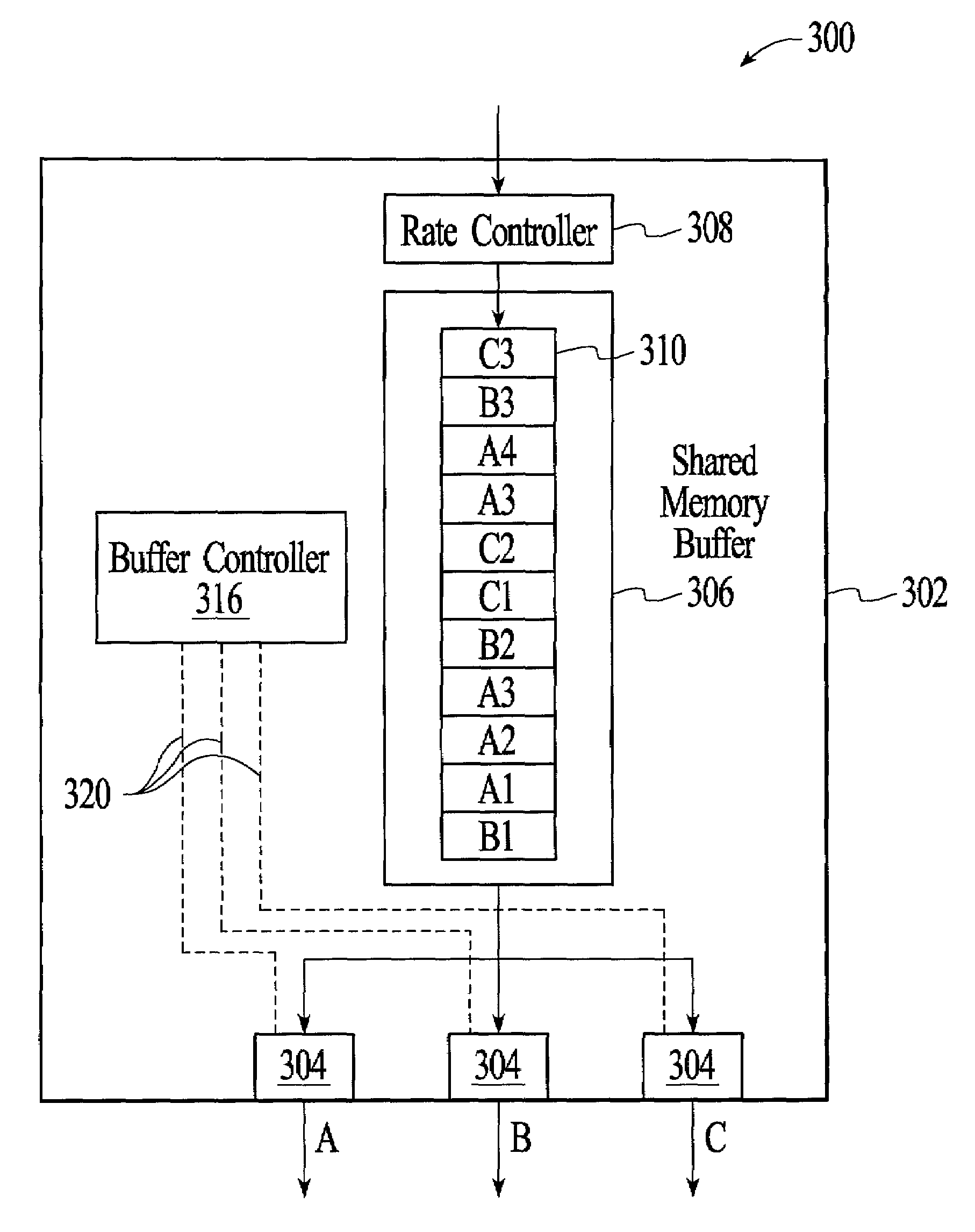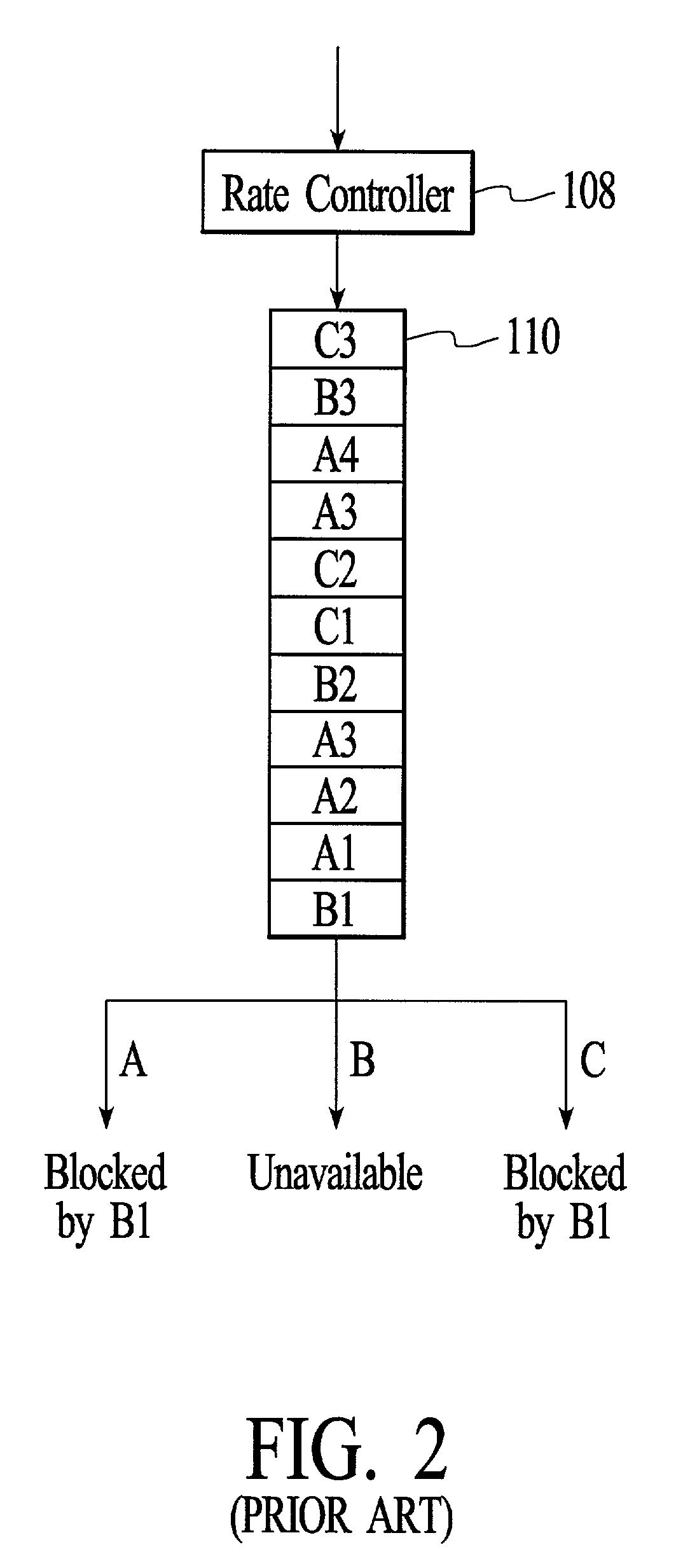Method and system for managing packets in a shared memory buffer that serves multiple output links
a shared memory and buffer technology, applied in the field of packet dispatching from a buffer that, can solve problems such as head-of-line blocking problems, packet-switched network traffic patterns that are known to be erratic, and traditional packet-switched network nodes are not designed to ensur
- Summary
- Abstract
- Description
- Claims
- Application Information
AI Technical Summary
Benefits of technology
Problems solved by technology
Method used
Image
Examples
Embodiment Construction
[0024]A technique for dispatching packets from a shared memory buffer involves linking buffered packets into a linked list in the order that the packets are written into the shared memory buffer, going through the packets in the order of the linked list, and dispatching the first packet that is intended for an available output link even if the first packet that is intended for an available output link is not the oldest packet on the linked list.
[0025]FIG. 3 depicts a system 300 for dispatching packets from a shared memory buffer that serves multiple output links. The system includes a rate controller 308, a shared memory buffer 306, a buffer controller 316, and three output links 304. In the embodiment of FIG. 3, the system is integrated into a switch module 302 that is a component of a network node, such as a switch or a router. The switch module is, for example, a switch card that is inserted into a chassis-based network node. In an embodiment, the switch module performs other fun...
PUM
 Login to View More
Login to View More Abstract
Description
Claims
Application Information
 Login to View More
Login to View More - R&D
- Intellectual Property
- Life Sciences
- Materials
- Tech Scout
- Unparalleled Data Quality
- Higher Quality Content
- 60% Fewer Hallucinations
Browse by: Latest US Patents, China's latest patents, Technical Efficacy Thesaurus, Application Domain, Technology Topic, Popular Technical Reports.
© 2025 PatSnap. All rights reserved.Legal|Privacy policy|Modern Slavery Act Transparency Statement|Sitemap|About US| Contact US: help@patsnap.com



